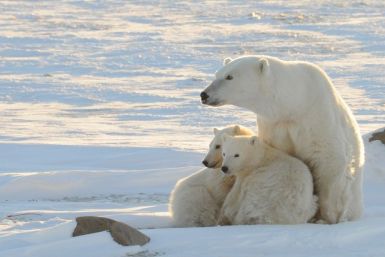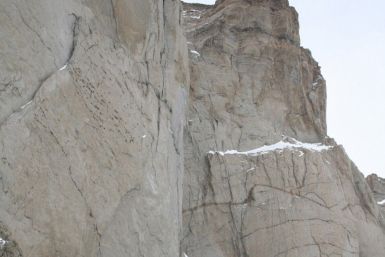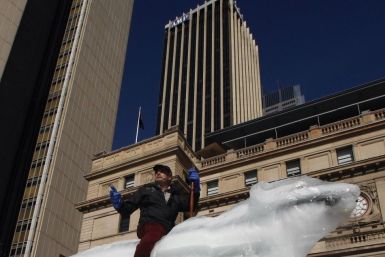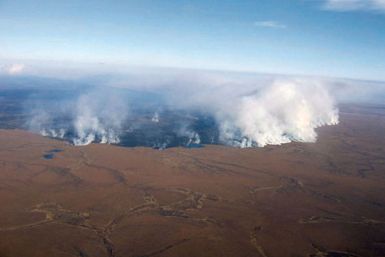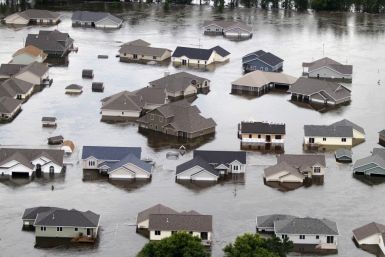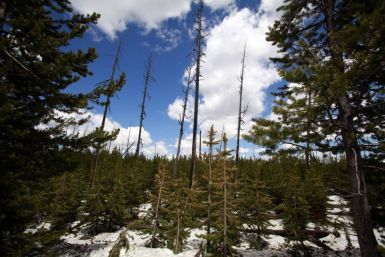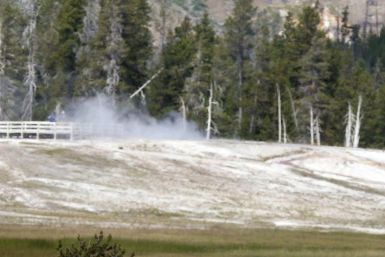Charles Monnett, a leading climate scientist whose research helped galvanize the global warming movement, has been suspended pending an investigation into his 2006 paper on polar bear drownings.
Global warming proponents can catch up on the sleep they lost worrying about the planet getting hotter with each passing day. A NASA study which analyzes satellite data from the years 2000 through 2011, published in the peer-reviewed science journal Remote Sensing, reports that Earth's atmosphere is allowing far more heat to be released into space than global warming proponents' computer models have predicted.
Melting ice sheets of Greenland have been a cause of concern for researchers and climate change proponents, as previous studies on the ice sheet behaviors projected Greenland's ice less stable when compared to Antarctica's ice. But a recent study by scientists from the University of Wisconsin-Madison, suggests that we may have got it all wrong.
A 2007 wildfire in northern Alaska released as much carbon as the entire Arctic tundra absorbs in one year, scientists said. The Anaktuvuk River fire spanned 400 sq miles and doubled the amount of Alaskan tundra affected by fire since 1950.
A 2007 fire that covered more than 400 square miles of Alaska tundra is providing new clues into the effects that an increase of fires in the Arctic tundra will have on climate change.
In 2007, the Anaktuvuk River fire swept across more than 400 square miles, doubling the cumulative size of Alaskan tundra affected by fire since 1950.
Drastic changes in global climate patterns will pose a dire threat to peace and security around the world, warns the head of the United Nations.
A study finds that climate change could increase the frequency of fires in Yellowstone National Park, resulting in a drastically changed landscape that could alter the entire ecosystem.
Yellowstone National Park's landscape may be totally altered by 2075 as climate change increases the frequency pattern of large wildfires, according to a new study released in the Proceedings of the National Academy of Sciences.
Large fires in Yellowstone National Park could significantly increase due to climate change, drastically altering the park people know today, a new study suggests.
Global warming will cause more wildfires at Yellowstone National Park. The combination of the wildfires and rising temperature will fundamentally change the ecosystem at Yellowstone, possibly by as soon as 2050, according to a new study led by Professor Anthony Westerling of the University of California, Merced.
Just a few decades ago, the Yellowstone National Park in Wyoming routinely saw no big wildfires in a given year.
A huge release of methane gas may have triggered the prehistoric mass extinctions that allowed dinosaurs to become the dominant life form on earth, according to a new study.
Richard Marles, the Australian government's Parliamentary Secretary for the Pacific, warned the United Nations Wednesday of rising sea levels and their impact on low-lying islands and asked them to include climate change as a global security issue.
A senior United Nations official warned that climate change could become a catalyst for sudden and abrupt shocks worldwide and have far-reaching implications for global stability and security. Achim Steiner, executive director of the U.N. Environmental Program, told the U.N. Security Council Wednesday that natural resources are at risk.
About 50 percent of the Earth's internal heat stems from a radioactive decay process, a new study has found, and it's strong enough to literally move the ground under your feet.
Forget wind power and extra efficient lightbulbs -- trees are an incredibly effective climate change weapon given the amount of greenhouse gases they absorb, according to a new study in the journal Science.
Researchers at the US Geological Survey (USGS) has concluded that last year's seasonal El Nino was responsible for severe erosion along the West Coast during the winter and could be an indicator of things to come.
Climate scientists have turned to the United States and Australian navies to deploy robotic measuring devices in the Indian Ocean where pirates have made the area too dangerous for researchers.
Climate scientists have turned to the United States and Australian navies to deploy robotic measuring devices in the Indian Ocean where pirates have made the area too dangerous for researchers.
The heat wave and debilitating drought affecting more than a dozen states has people asking a common question in this season of extreme weather: why? The answer is likely a weather phenomenon called La Niña.
The U.S. registered its 19th driest and 26th warmest June on record, according to scientists at the National Oceanic Atmospheric Administration's National Climatic Data Center in Asheville, N.C.









